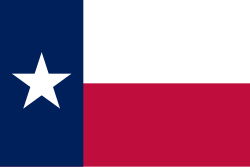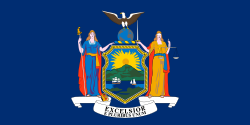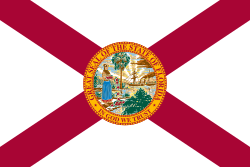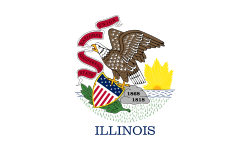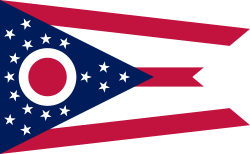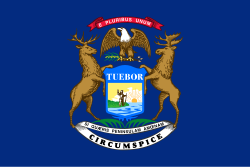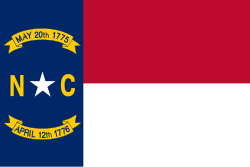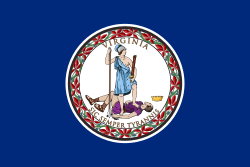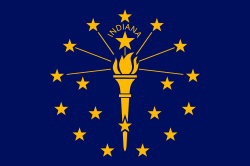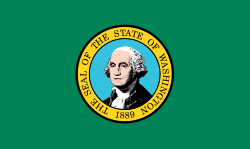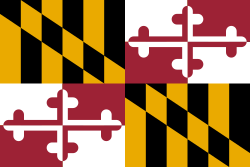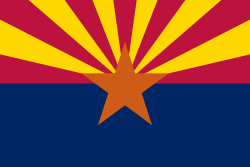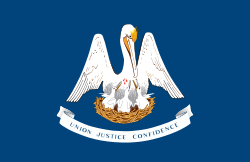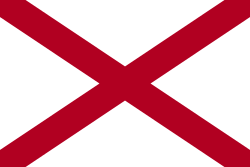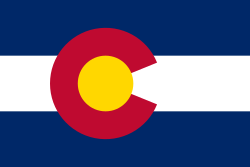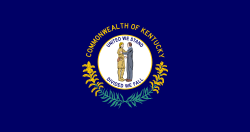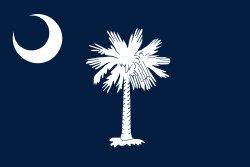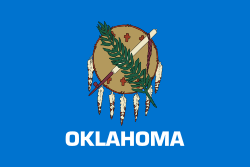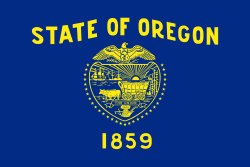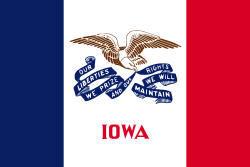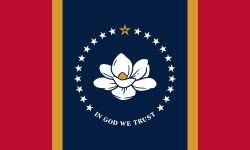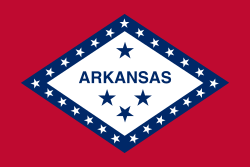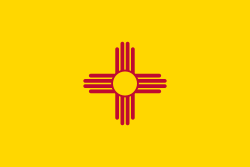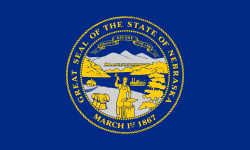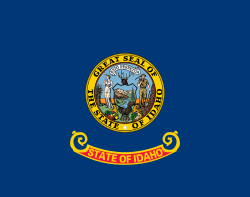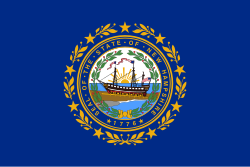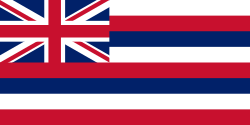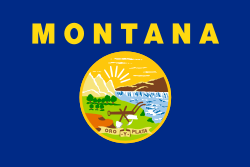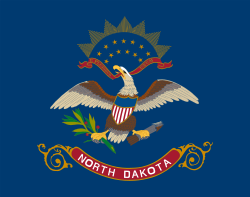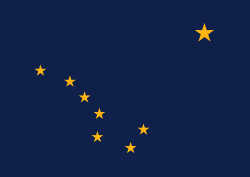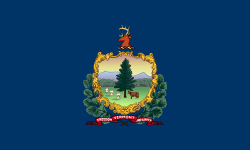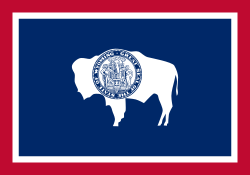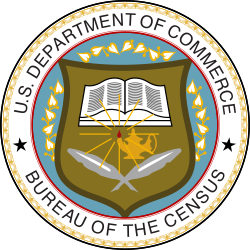United States Census 2000
| United States Census 2000 | |
|---|---|
| Erhoben am | 1. April 2000 |
| Einwohnerzahl | 281.421.906 |
| Veränderung zu 1990 | + 13,2 % |
| Bevölkerungsreichster Bundesstaat | Kalifornien 33.871.648 |
| Bevölkerungsärmster Bundesstaat | Wyoming 493.782 |
| ← 1990 • 2010 → | |
Der United States Census 2000 war die 22. Volkszählung in den USA. Sie wurde vom United States Census Bureau durchgeführt.
Auswahl von Auszählungsergebnissen
Als Ergebnis der Auszählung wurde für die USA zum Stichtag 1. April 2000 eine Bevölkerungszahl von 281.421.906 Einwohnern ermittelt, was gegenüber der Volkszählung zehn Jahre vorher (United States Census 1990, 248.709.873 Einwohner) eine Steigerung der Bevölkerungszahl um 13,2 Prozent bedeutet. Diese Zahl umfasste die Bevölkerung der 50 US-Bundesstaaten sowie des District of Columbia. Zusätzlich wurde bei dieser Volkszählung die Einwohnerzahl von Puerto Rico bestimmt; sie lag mit 3.808.610 Einwohnern um 8,1 Prozent höher als vor zehn Jahren.
Zwischen 1990 und 2000 stieg die Bevölkerung in der Altersgruppe der 45- bis 54-Jährigen um 49 Prozent, in der Altersgruppe der mindestens 85-Jährigen um 38 Prozent an. Die Bundesstaaten mit dem höchsten Bevölkerungswachstum relativ zur letzten Volkszählung waren Nevada (+66,3 %), Arizona (+40,0 %), Colorado (+30,6 %) und Utah (+29,6 %).
52 Prozent der US-amerikanischen Haushalte verfügten der Volkszählung zufolge über einen Computer, 41 Prozent über einen Internetzugang.
Die in den alle zehn Jahre stattfindenden Volkszählungen der Vereinigten Staaten ermittelten Einwohnerzahlen der Bundesstaaten sind der Schlüssel zur Festlegung der Anzahl der Abgeordneten aus diesen Bundesstaaten im Repräsentantenhaus der Vereinigten Staaten. Die Anpassung wird in der Regel im übernächsten Kongress nach einer Volkszählung vorgenommen.
Staaten nach Einwohnerzahl
Bundesstaaten der USA nach Einwohnerzahl im Jahr 2000.
| Rang | Bundesstaat | Einwohnerzahl | Steigerung zu 1990 |
|---|---|---|---|
| 1 | 33.871.648 | +13,8 % | |
| 2 | 20.851.820 | +22,8 % | |
| 3 | 18.976.457 | +5,5 % | |
| 4 | 15.982.378 | +23,5 % | |
| 5 | 12.419.293 | +8,6 % | |
| 6 | 12.281.054 | +3,4 % | |
| 7 | 11.353.140 | +4,7 % | |
| 8 | 9.938.444 | +6,9 % | |
| 9 | 8.414.350 | +8,9 % | |
| 10 | 8.186.453 | +26,4 % | |
| 11 | 8.049.313 | +21,4 % | |
| 12 | 7.078.515 | +14,4 % | |
| 13 | 6.349.097 | +5,5 % | |
| 14 | 6.080.485 | +9,7 % | |
| 15 | 5.894.121 | +21,1 % | |
| 16 | 5.689.283 | +16,7 % | |
| 17 | 5.595.211 | +9,3 % | |
| 18 | 5.363.675 | +9,6 % | |
| 19 | 5.296.486 | +10,8 % | |
| 20 | 5.130.632 | +40,0 % | |
| 21 | 4.919.479 | +12,4 % | |
| 22 | 4.468.976 | +5,9 % | |
| 23 | 4.447.100 | +10,1 % | |
| 24 | 4.301.261 | +30,6 % | |
| 25 | 4.041.769 | +9,7 % | |
| 26 | 4.012.012 | +15,1 % | |
| 27 | 3.450.654 | +9,7 % | |
| 28 | 3.421.399 | +20,4 % | |
| 29 | 3.405.565 | +3,6 % | |
| 30 | 2.926.324 | +5,4 % | |
| 31 | 2.844.658 | +10,5 % | |
| 32 | 2.688.418 | +8,5 % | |
| 33 | 2.673.400 | +13,7 % | |
| 34 | 2.233.169 | +29,6 % | |
| 35 | 1.998.257 | +66,3 % | |
| 36 | 1.819.046 | +20,1 % | |
| 37 | 1.808.344 | +0,8 % | |
| 38 | 1.711.263 | +8,4 % | |
| 39 | 1.293.953 | +28,5 % | |
| 40 | 1.274.923 | +3,8 % | |
| 41 | 1.235.786 | +11,4 % | |
| 42 | 1.211.537 | +9,3 % | |
| 43 | 1.048.319 | +4,5 % | |
| 44 | 902.195 | +12,9 % | |
| 45 | 783.600 | +17,6 % | |
| 46 | 754.844 | +8,5 % | |
| 47 | 642.200 | +0,5 % | |
| 48 | 626.932 | +14,0 % | |
| 49 | 608.827 | +8,2 % | |
| ... | 572.059 | −5,7 % | |
| 50 | 493.782 | +8,9 % | |
| 281.421.906 | +13,2 % |
Bevölkerungsreichste Städte
Die 25 bevölkerungsreichsten Städte der USA nach Einwohnerzahl im Jahr 2000.
| Rang | Stadt | Bundesstaat | Einwohnerzahl |
|---|---|---|---|
| 1 | New York | New York | 8.008.278 |
| 2 | Los Angeles | Kalifornien | 3.694.820 |
| 3 | Chicago | Illinois | 2.896.016 |
| 4 | Houston | Texas | 1.953.631 |
| 5 | Philadelphia | Pennsylvania | 1.517.550 |
| 6 | Phoenix | Arizona | 1.321.045 |
| 7 | San Diego | Kalifornien | 1.223.400 |
| 8 | Dallas | Texas | 1.188.580 |
| 9 | San Antonio | Texas | 1.144.646 |
| 10 | Detroit | Michigan | 951.270 |
| 11 | San Jose | Kalifornien | 894.943 |
| 12 | Indianapolis | Indiana | 791.926 |
| 13 | San Francisco | Kalifornien | 776.733 |
| 14 | Jacksonville | Florida | 735.617 |
| 15 | Columbus | Ohio | 711.470 |
| 16 | Austin | Texas | 656.562 |
| 17 | Baltimore | Maryland | 651.154 |
| 18 | Memphis | Tennessee | 650.100 |
| 19 | Milwaukee | Wisconsin | 596.974 |
| 20 | Boston | Massachusetts | 589.141 |
| 21 | Washington | District of Columbia | 572.059 |
| 22 | Nashville-Davidson | Tennessee | 569.891 |
| 23 | El Paso | Texas | 563.662 |
| 24 | Seattle | Washington | 563.374 |
| 25 | Denver | Colorado | 554.636 |
Weblinks
- Seite des „United States Census 2000“ beim United States Census Bureau (englisch)
Auf dieser Seite verwendete Medien
Flag of California. This version is designed to accurately depict the standard print of the bear as well as adhere to the official flag code regarding the size, position and proportion of the bear, the colors of the flag, and the position and size of the star.
Flag of the Commonwealth of Virginia, adopted in February 1950 and last modified in 2006.
ᎡᏩᏐᎾ ᎦᏓᏘ
The flag of Minnesota, since May 11, 2024.
Flag of Oregon (obverse): The flag was adopted by the state on February 26, 1925.[1] The state seal was decided in 1903.[2][3]
The flag of the U.S. state of Mississippi - aspect ratio of 5:3. Designed in 2020 and adopted in 2021, the "New Magnolia" flag was selected by the Commission to Redesign the Mississippi state flag in 2020.
The flag of Utah (2024-present). This is the final design submitted for consideration to be adopted as a new state flag of Utah. The design evokes images of snowy mountains and red rocks to represent the geography of Utah, the beehive represents "Industry" (the state's slogan) and Utah's nickname as "the Beehive State".
Flag of the State of Nevada. The flag is described in Nevada Revised Statutes Chapter 235, Sec. 20 as follows: The body of the flag must be of solid cobalt blue. On the field in the upper left quarter thereof must be two sprays of Sagebrush with the stems crossed at the bottom to form a half wreath. Within the sprays must be a five-pointed silver star with one point up. The word “Nevada” must also be inscribed below the star and above the sprays, in a semicircular pattern with the letters spaced apart in equal increments, in the same style of letters as the words “Battle Born.” Above the wreath, and touching the tips thereof, must be a scroll bearing the words “Battle Born.” The scroll and the word “Nevada” must be golden-yellow. The lettering on the scroll must be black-colored sans serif gothic capital letters.
Seal of the United States Census Bureau. The blazon is defined here as:
On a shield an open book beneath which is a lamp of knowledge emitting rays above in base two crossed quills. Around the whole a wreath of single leaves, surrounded by an outer band bearing between two stars the words "U.S. Department of Commerce" in the upper portion and "Bureau of the Census" in the lower portion, the lettering concentric with an inner beaded rim and an outer dentilated rim.




